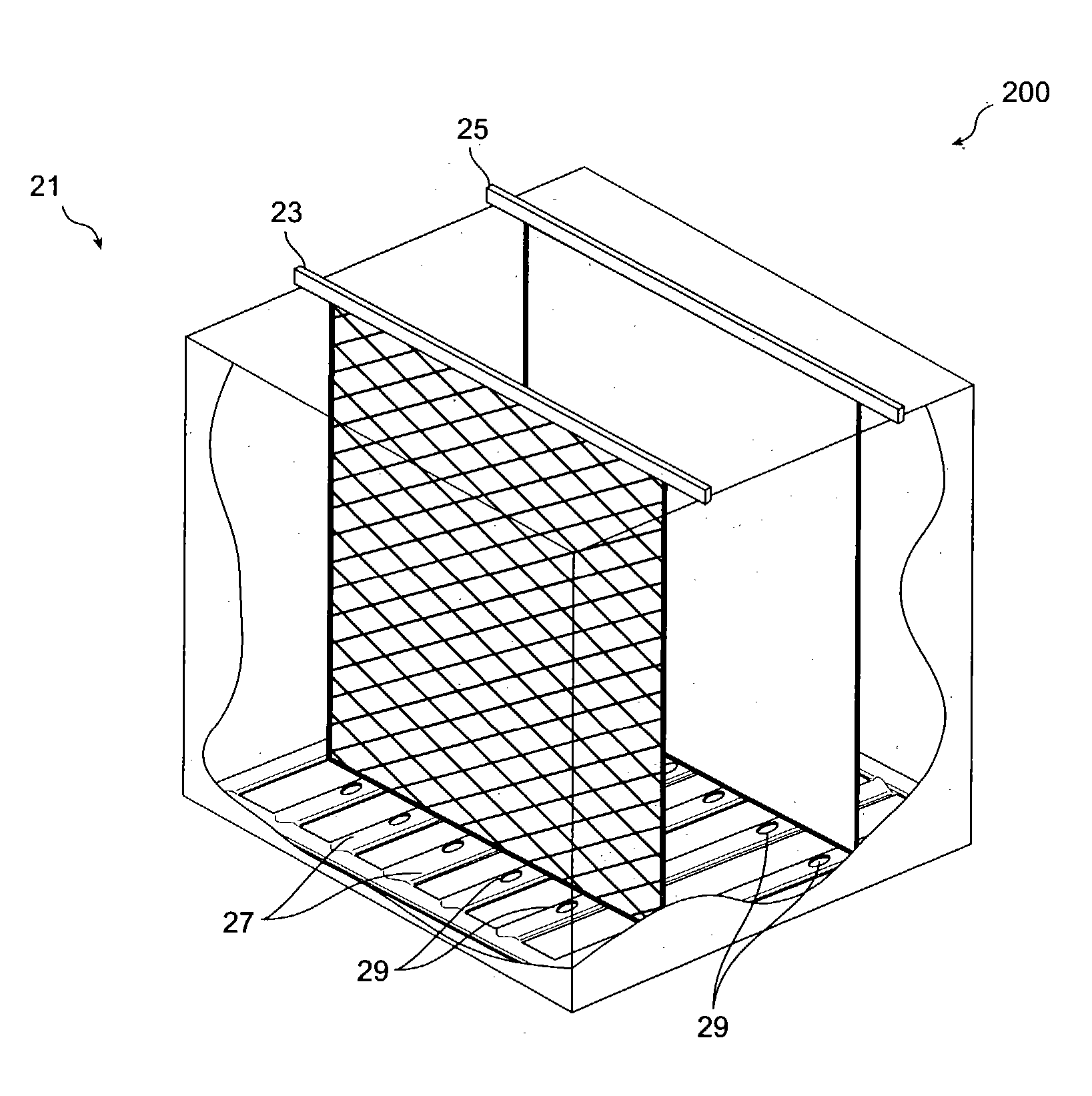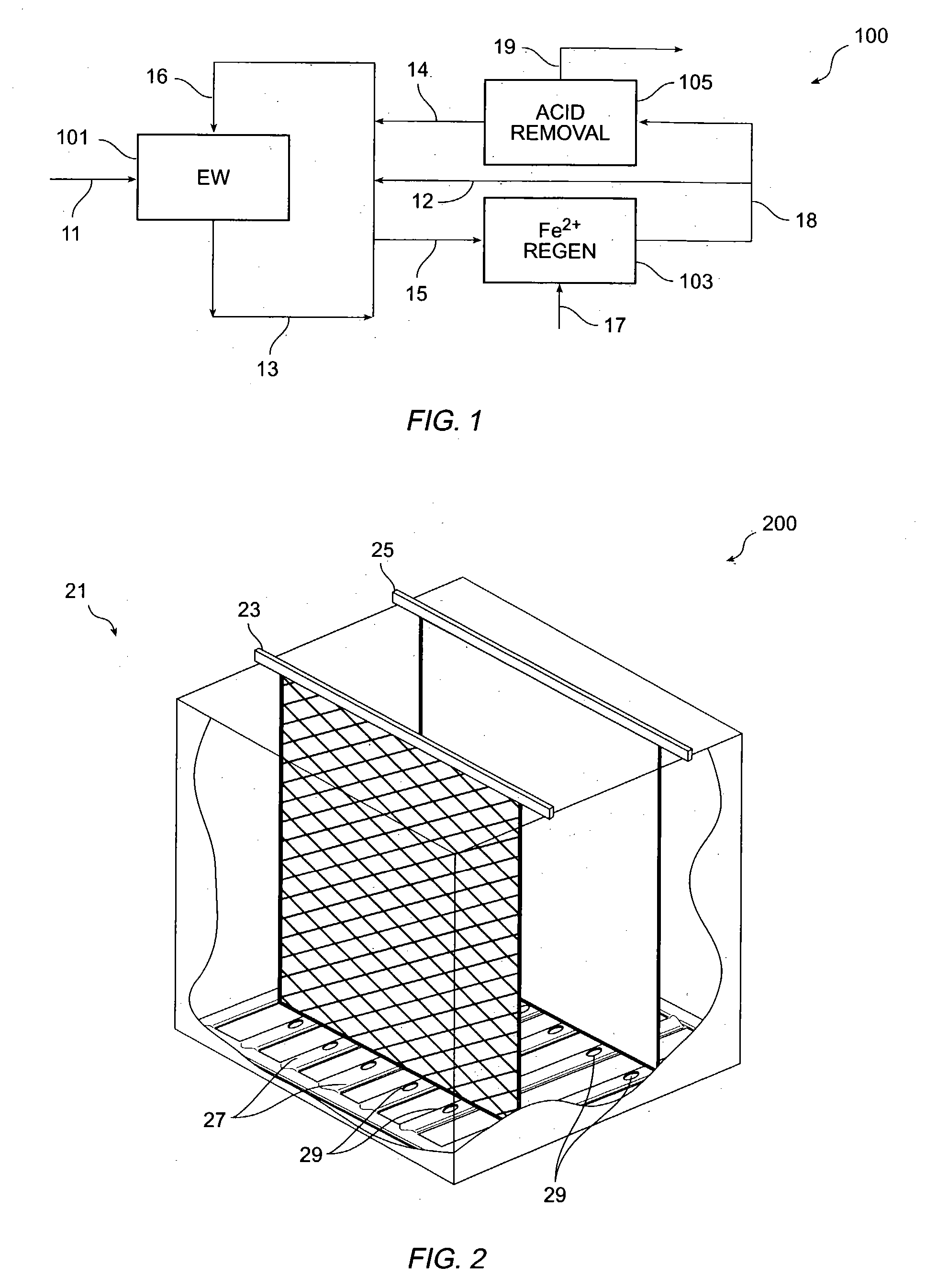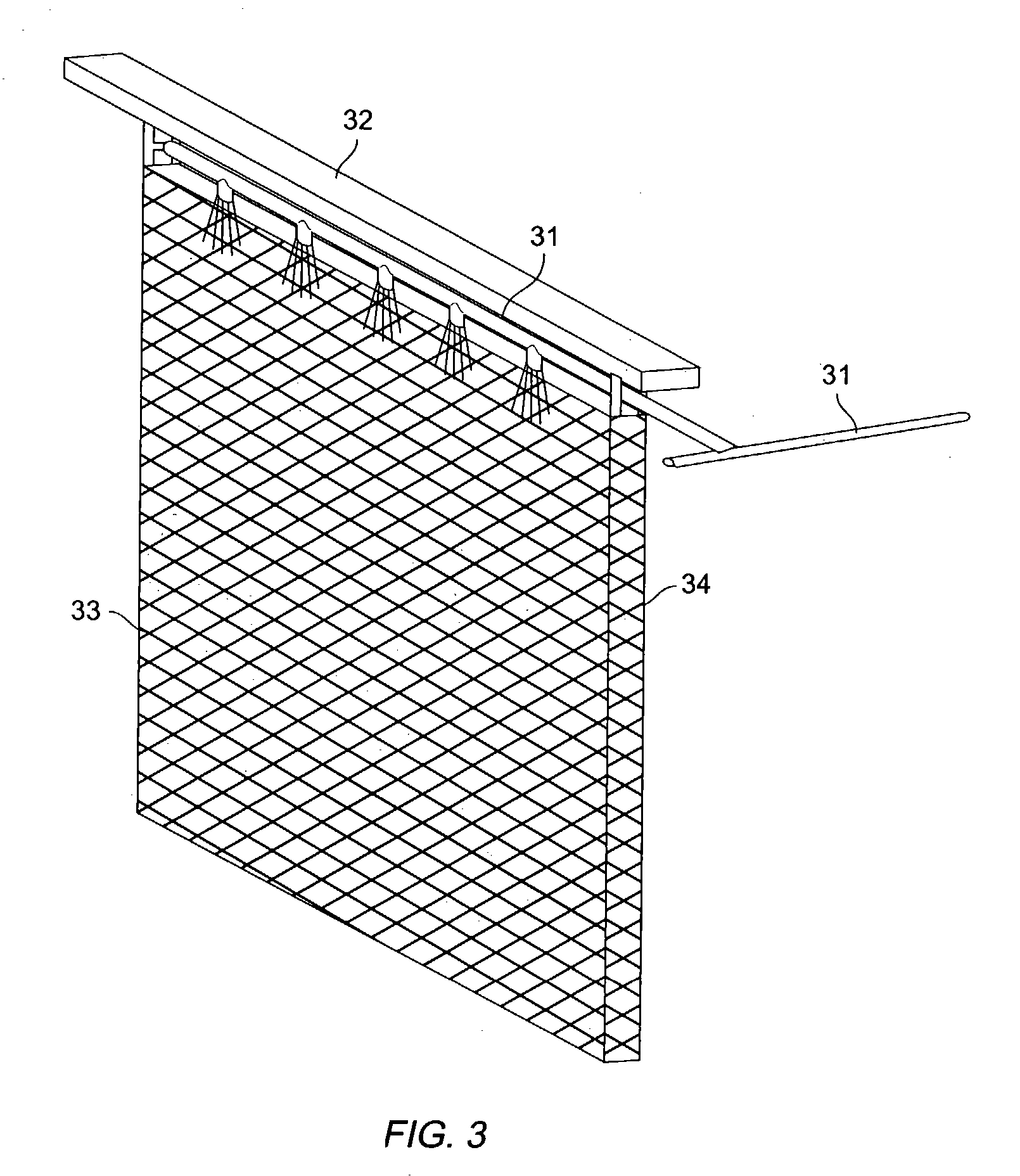Method and apparatus for electrowinning copper using the ferrous/ferric anode reaction
a technology of ferrous/ferric anode and electrowinning copper, which is applied in the field of methods and apparatus for electrowinning metals, can solve the problems of reducing the power required for electrowinning copper using an alternative anode reaction process, and achieve the effects of reducing acid mist generation, improving electrowinning efficiency, and reducing energy consumption
- Summary
- Abstract
- Description
- Claims
- Application Information
AI Technical Summary
Benefits of technology
Problems solved by technology
Method used
Image
Examples
example 1
[0083] TABLE 1 demonstrates the advantages of a flow-through anode with in-anode electrolyte injection for achieving low cell voltage. An in-anode manifold produces a lower cell voltage at the same flow or decreases flow requirements at the same current density versus bottom injection. TABLE 1 also demonstrates that a cell voltage below 1.10 V is achievable at a current density of about 35 A / ft2 (377 A / m2) and a cell voltage below 1.25 V is achievable at a current density of about 40 A / ft2 (430 A / m2).
[0084] Test runs A-F were performed using an electrowinning cell of generally standard design, comprising three full-size conventional cathodes and four full-size flow-through anodes. The cathodes were constructed of 316 stainless steel and each had an active depth of 41.5 inches and an active width of 37.5 inches (total active surface area of 21.6 ft2 per cathode). Each anode had an active width of 35.5 inches and an active depth of 39.5 inches and was constructed of titanium mesh wit...
example 2
[0093] TABLE 2 demonstrates that increasing temperature decreases cell voltage.
[0094] Test runs A-C were performed using an electrowinning cell of generally standard design, comprising three full-size conventional cathodes and four full-size flow-through anodes. The cathodes were constructed of 316 stainless steel and each had an active depth of 41.5 inches and an active width of 37.5 inches (total active surface area of 21.6 ft2 per cathode). Each anode had an active width of 35.5 inches and an active depth of 39.5 inches and was constructed of titanium mesh with an iridium oxide-based coating. The anodes used in accordance with this EXAMPLE 2 were obtained from Republic Anode Fabricators of Strongsville, Ohio, USA.
[0095] Test duration was six days, with continuous 24-hour operation of the electrowinning cell at approximately constant conditions. Voltage measurements were taken once per day using a handheld voltage meter and voltages were measured bus-to-bus. The stated values fo...
PUM
| Property | Measurement | Unit |
|---|---|---|
| current density | aaaaa | aaaaa |
| voltage | aaaaa | aaaaa |
| current density | aaaaa | aaaaa |
Abstract
Description
Claims
Application Information
 Login to View More
Login to View More - R&D
- Intellectual Property
- Life Sciences
- Materials
- Tech Scout
- Unparalleled Data Quality
- Higher Quality Content
- 60% Fewer Hallucinations
Browse by: Latest US Patents, China's latest patents, Technical Efficacy Thesaurus, Application Domain, Technology Topic, Popular Technical Reports.
© 2025 PatSnap. All rights reserved.Legal|Privacy policy|Modern Slavery Act Transparency Statement|Sitemap|About US| Contact US: help@patsnap.com



